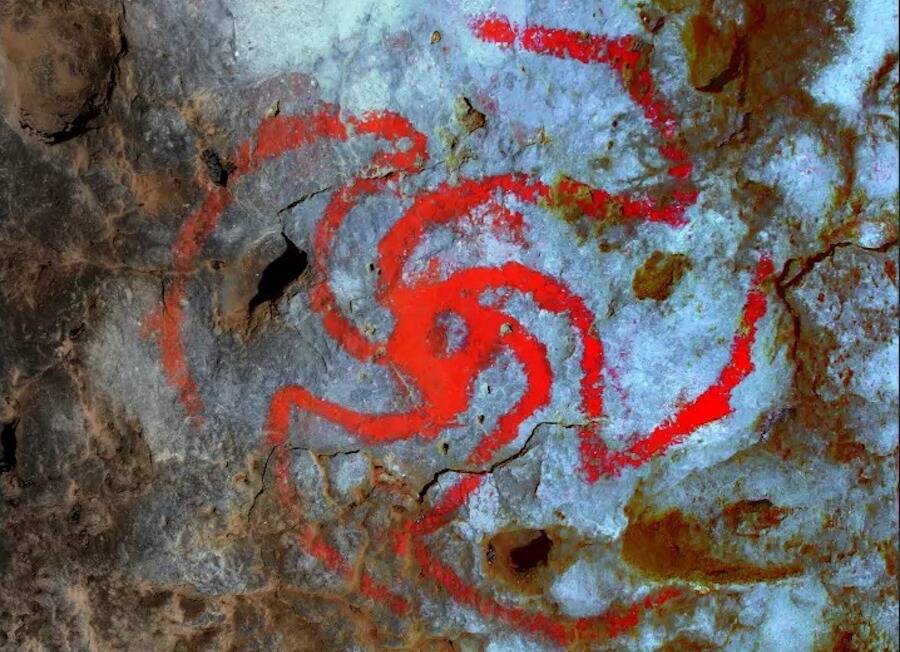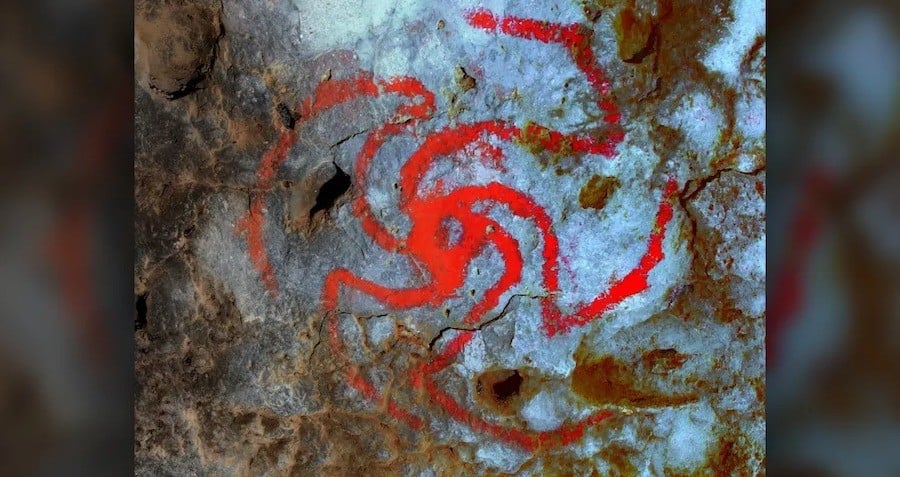Ancient California Cave Reveals 400-Year-Old Native American Drawing of Mysterious Hallucinogenic ‘Trance Flower’—What Secrets Does It Hold?
Think about this for a second—what if tripping on a flower was as much a community event back in the 1600s as binge-watching your favorite show is today? Deep in a cave northeast of Santa Barbara, the Chumash people might’ve been doing just that, turning Pinwheel Cave into a psychedelic sanctuary. Picture this: they’re chewing on bits of Datura wrightii—a flower packed with some seriously mind-bending chemicals—and gazing up at a swirling red “pinwheel” painted on the ceiling. Not your everyday cave art, right?
Turns out, that pinwheel isn’t just pretty colors—it’s an ancient botanical snapshot of the flower itself unfurling, accompanied by a hawkmoth, its pollinator. And if you think that’s wild, wait ’til you hear about the 400-year-old chewed “quids” found stuck nearby, which smell suspiciously like an old-school dose of nature’s own hallucinogen. The Chumash weren’t just out there hunting or hanging—they had a whole ritual around this flower, using it for healing, protection, and even spiritual vision quests. And while it sounds like the artists painted their masterpieces sober—thankfully, because painting while tripping on Datura? Yeah, no thanks—they clearly intended for those pinwheels to set the mood for shared “sacred dreams.”
So next time you think about ancient rock art, remember: that wasn’t just history on stone—it might’ve been the tribe’s own version of a trip playlist. Curious how they pulled that off and what it all means? LEARN MORE.
The cave is believed to have been in use by the Chumash people between 1600 and 1800, and evidently served as a space in which they could trip on the flower Datura wrightii.

Devlin GandyThe cave art resembles an unfurling Datura wrightii, a flower that contains both scopolamine and atropine which are two very psychoactive compounds.
A new study has found that Indigenous cave art near Santa Barbara, California likely depicts a hallucinogenic “trance flower” known as Datura wrightii. Beside the drawing, researchers also found 400-year-old chewed globs that they now believe to be the flower itself.
According to LiveScience, researchers believe that these Indigenous Californians, known as the Chumash people, would gather within the cave after ingesting Datura and look up at the ceiling where they had drawn a red pinwheel beside a depiction of a hawkmoth, an insect that pollinates Datura.












